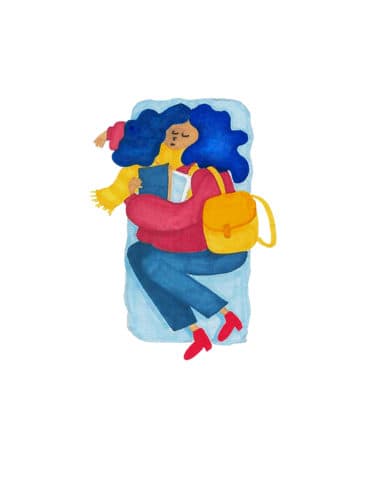University students are often deprived of sleep because of school, work and extracurricular activities, and it is not uncommon to see students napping on campus. Last term, Peer Health Mentors decided to help fellow students during the exam period by setting up a nap room at the University of Saskatchewan.
From Dec. 12 to 14, 2016, Peer Health Mentors ran the nap room pilot project in the old section of the Health Sciences Building in response to a survey, conducted in November, analyzing the sleep habits of U of S students. Of the 173 respondents, over 80 per cent reported being interested in a nap room on campus, while 78.9 per cent said they would use a nap room if one was available.
Danielle Shymanski, first-year pharmacy student and member of the Mental Health group for the Peer Health Mentors, explained the importance of having enough sleep to succeed in school.
sleep to succeed in school.
“Sleep deprivation is correlated to lower GPAs due to its effects on concentration, memory and the ability to learn, while the National Sleep Foundation lists lowered stress and anxiety, increased memory retention and enhanced performance as benefits of napping. Students are faced with many long days at school, particularly at the end of the semester, which can be both physically and mentally exhausting. The goal of the nap room was to provide a safe space for students to tend to their mental health,” Shymanski said.
During the pilot project, the nap sessions took place in 45 minute intervals, 40 minutes to nap and five to clean the space. There were eight nap spaces, each with a mat, courtesy of the Fit Centre, a disposable pillow and dividers on either side to ensure student privacy. Volunteers from Peer Health were stationed outside the room to assist with check-in and check-out and to monitor belongings while students napped. This project was also supported by Student Services and Facilities Management.
Elizabeth Walsen, third-year psychology student and a facilitator of the Mental Health group, shares that interest in the project grew as word spread.
“When we first announced it, we had a really good Facebook response. There were over 27,000 people reached, and 62 people shared it. So I think that just shows that people are really interested in the idea,” Walsen said.
Shymanski explains that a main goal of the nap room project was to promote and ensure students’ physical well-being and mental health.
“For those who already napped on campus, we wanted to make a safe, comfortable space on campus accessible to all. For those who did not nap on campus due to safety or hygienic concerns, we wanted to create an environment that better suited their needs,” Shymanski said.
According to Walsen, Peer Health conducted a survey with students after they used the nap room, and the feedback was largely positive.
“The actual project went pretty well … [Students] appreciate that the university is considering their need for sleep. Some of the feedback we got was that students wanted it again next term [and] they wanted it for more days. They thought it was really comfortable, quiet, the lighting was really good … The only issue that we had was the room … Because it was old, there was a bit of a draft and I guess the furnace was kind of loud too. So we will definitely need to take that into consideration,” Walsen said.
In future, Shymanski and Walsen hope to collaborate with other campus groups and offer students an improved nap room experience.
“Peer Health would like to see another program run for the second term final exam period,” Shymanski said. “Reflection of the first pilot run, as well as student feedback, will be used to improve the nap room. Discussion for a permanent location to establish a nap room is also taking place.”
—
Gabriel Siriany Linares
Graphic: Laura Underwood / Layout Manager